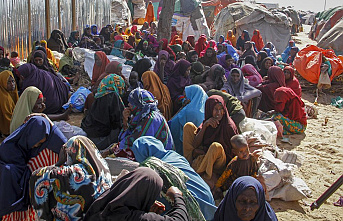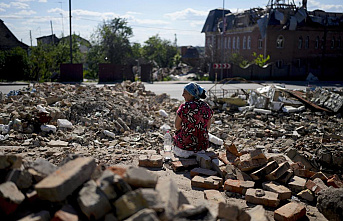In Colombia there were at least a victim of explosive devices and landmines each day during 2019. In only one week of December, reported eleven victims. The figure reveals the International Committee of the Red Cross is the evidence that the problem with the one that has loaded the andean country after five decades of conflict is still alive.
The demining and removal of other explosive devices was one of the objectives of the peace agreement between the colombian government and the FARC, and although it has worked in the cleaning of some areas, the reality is that the artifacts are still maiming and especially to the peasants. Of 319 casualties recorded between January and November, 142 are civilians and of those, 19 were minors. The humanitarian crisis already saw from 2018, when the men were 220 victims by these artifacts.
Beyer, a young man of Arauca, the region on the border with Venezuela, he lost part of his finger when he entered the field in to cut some bananas. “I went to the banana on one side and came out the other when it sounded a blast. When I got up from the explosion I realized that my little finger me hung”. His testimony is one of many that occurred this year and for which the ICRC alert for the seriousness of the phenomenon. Now Beyer live with the psychological sequelae and dreams constantly with the explosion. “In Arauca, we have to live with the consequences of the war. The peasants have nothing to do with the conflict,” he says. Your region, as well as Antioquia, Norte de Santander, Chocó, and Nariño are some of the most reported victims.
After the disarmament of the FARC, now converted into a political party, there has been a rearrangement of the armed groups. Disagreement of such a group, the strengthening of the guerrillas of the ELN and the presence of paramilitary groups linked to drug trafficking have besieged several rural populations of the country. But it's not just landmines that are the most well-known. The situation reported by the ICRC, also refers to other artifacts. Thus, of the 319 victims, documented, 130 were for landmine, 5 by explosive remnants of war, 110 by explosive detonation controlled and 74 by other artifacts thrown.
Use of new weapons
The ICRC has expressed concern about a strategy on the rise: the use of improvised explosive detonation controlled. With the aggravating circumstance that these victims are considered before the colombian law “as victims of terrorist acts or terrorist attacks” and for that reason “does not receive the same attention and compensation that the victims of anti-personnel mines”.
Also, the latest report from the Landmine and Cluster Munition Monitor, reflected that “new use of explosive weapons” in areas where before there had been. “It is estimated that of the 290.000 m2 of contamination by landmines that were identified in 2018, approximately 20% was new contamination found primarily in the department of Cauca”, indicates the report, which did a review of the phenomenon in the last twenty years.
Before the atomization of the war, has also detected that the armed actors no longer warn them to farmers where there are explosive devices and even recorded cases is close to schools, in a clear violation of international humanitarian law, which protects especially the colleges and hospitals. In addition, in the midst of the dispute over the territory between these armed groups have returned to practices such as the confinement of the communities and the attacks in areas of manual eradication of illicit crops, but also where there are projects of megaminería, among others. “The immediate result has been the increase in victims of Weapon Contamination. Has tripled the number of direct victims between 2017 and 2018. In 2019, the trend is on the rise”, says the ICRC.
however, for the agency Decontaminates Colombia, the Office of the High Commissioner for Peace of the government of Ivan Duque, the number of victims is lower. According to their data, between January and November, 109 people were affected. The difference in numbers lies in the fact that the Government registers only the victims of mines and other explosive devices that are causing major havoc. Nor do they include the cases of combatants killed and injured.
Colombia started to demine since 2006, in the framework of the Ottawa Convention. Later, thanks to the peace process, they did clean up programs jointly between the Army and the FARC and it was possible to enter to remove mines in areas that before were impossible before. The current administration continued the process and in November of 2019 announced that there are “38 new municipalities free of suspicion of anti-personnel mines, thus completing a total of 391 (55%) municipalities out of the total of 713 with some kind of pollution,” as reported by government delegates at the Fourth Review Conference of the Convention on the Prohibition of the Use, Stockpiling, Production and Transfer of anti-personnel Mines and on their Destruction —or the ‘Ottawa Convention’, which was held in Oslo. However, the country did not reach the original goal of eliminating anti-personnel mines prior to the 2021 and extended the target for 2025, which indicates that the problem of mines and explosive devices in Colombia is not yet a thing of the past.
Date Of Update: 28 December 2019, 00:00










